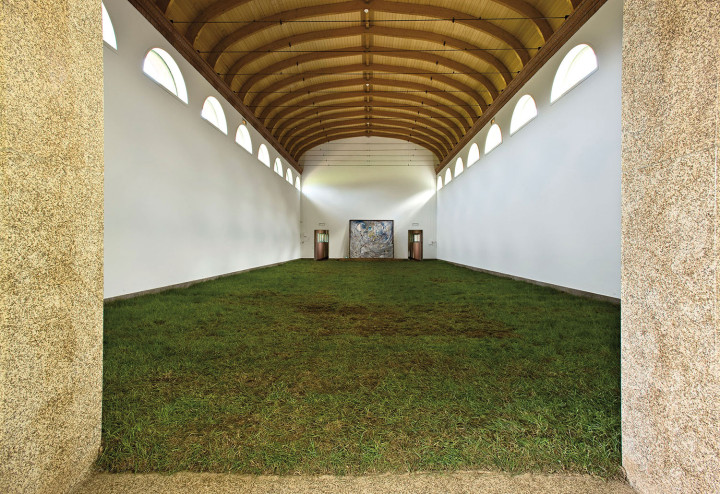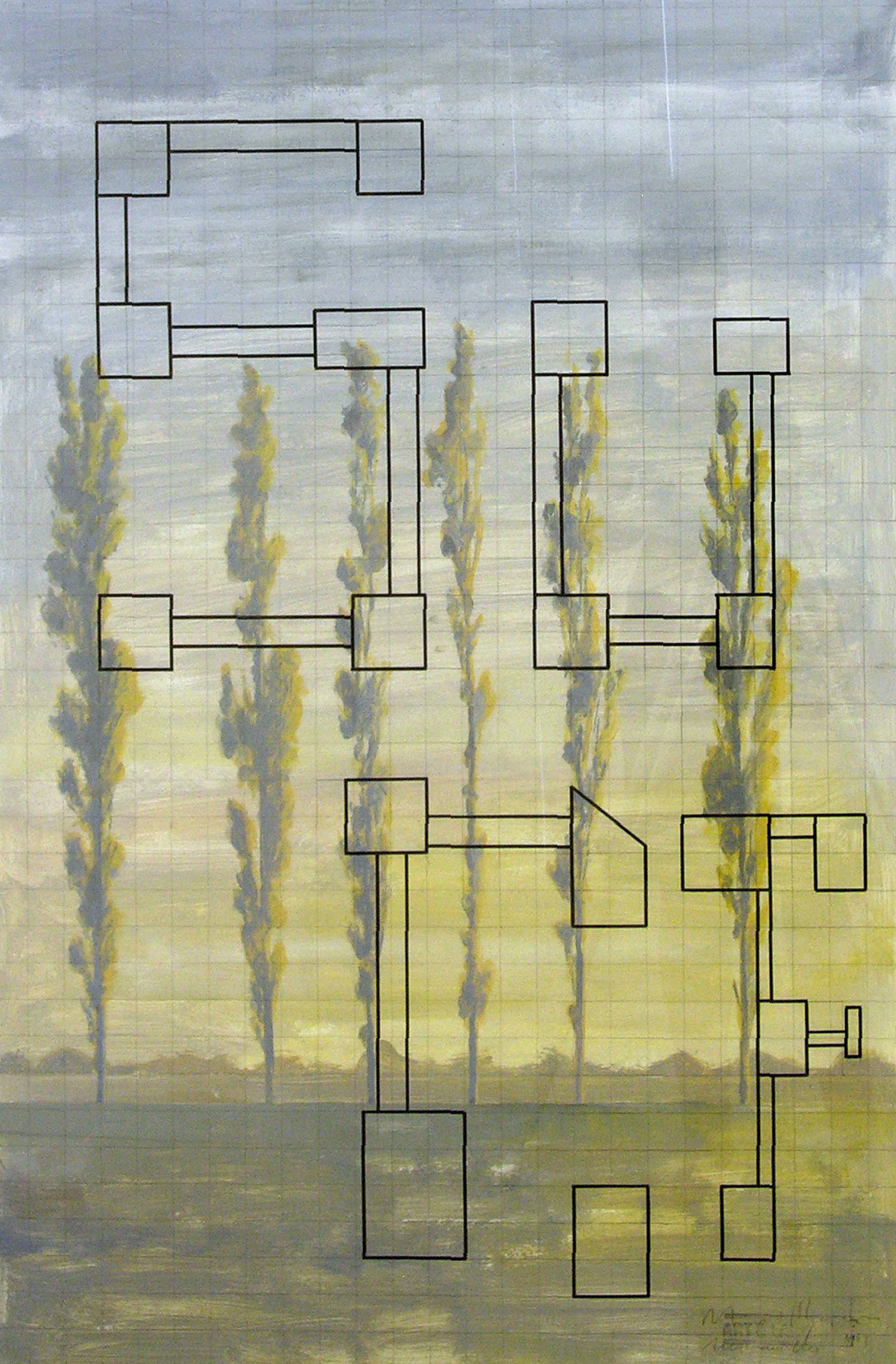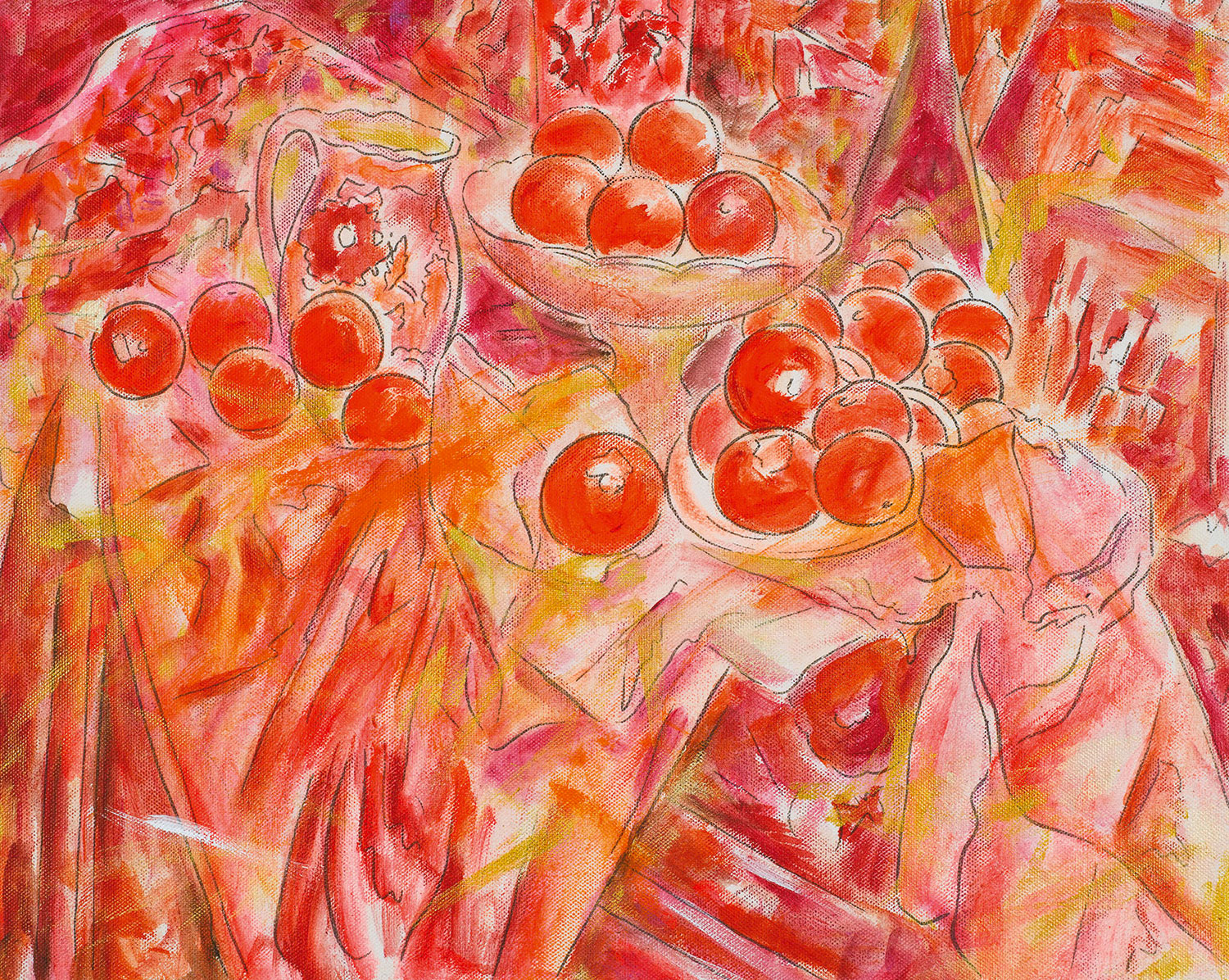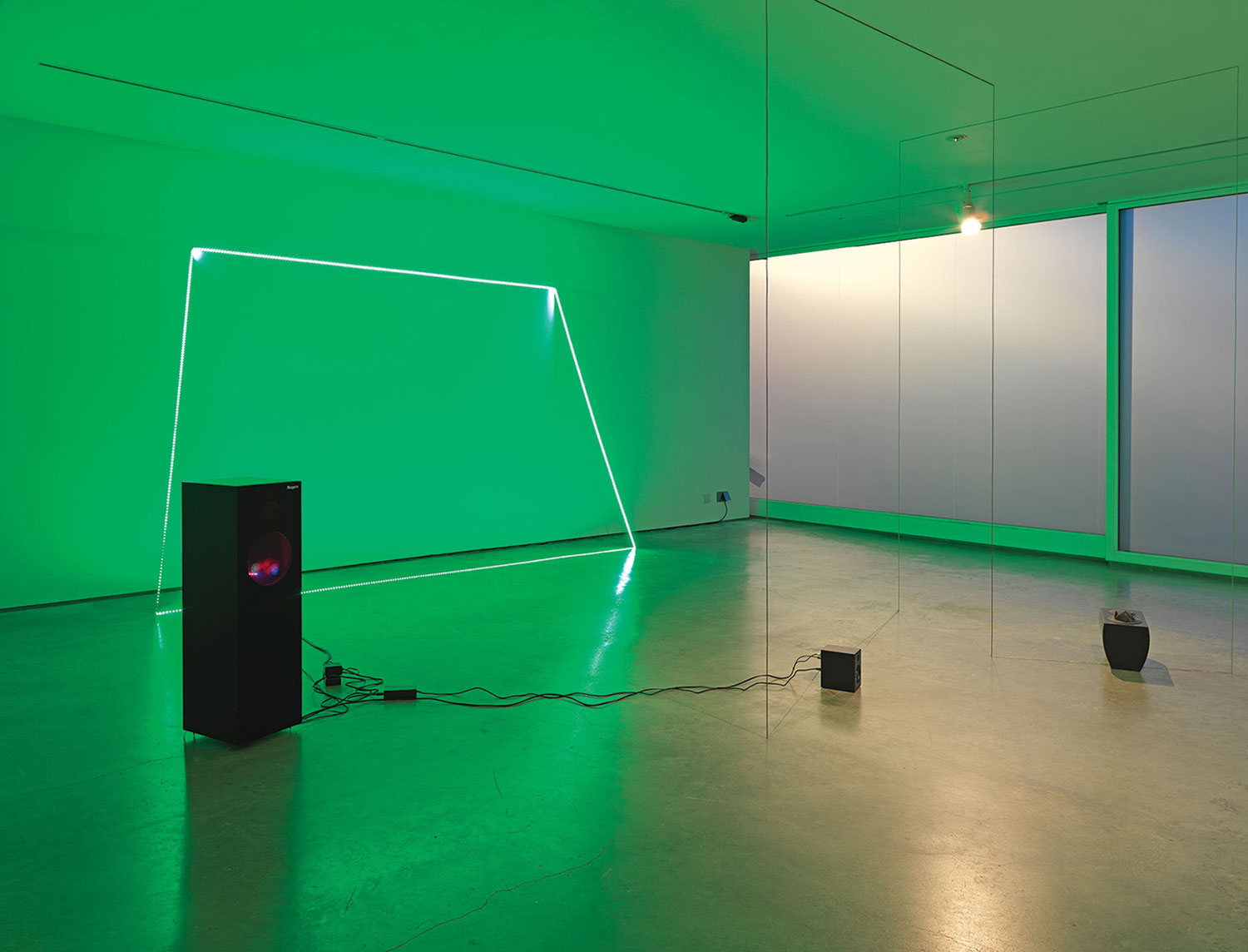
Very few exhibitions adequately follow Mies van der Rohe’s famous motto: “less is more.” But that statement perfectly describes Marisa Merz’s exhibition presented at the Centre international d’art et du paysage de l’île de Vassivière, in the French province: made of only four artworks — two sculptures and two paintings — it expresses a genuine and unique strength, while attesting to the human fragility of a woman.
The artist worked on site for several months, taking two weeks to prepare the display itself. And in the three rooms in which the works are presented, everything is incredibly well thought out: in the center of the building, also known as the nef, Merz plays with the religious ideas associated with this form of architectural design. On the one hand, grass has invaded the ground, breaching the barrier between inside and outside, nature and culture.
But on the other hand, the painting / installation is placed at the end of the nef, as if it were some sort of altar. Moreover, it represents in its center a veiled female figure that could, in some way, be associated with the Virgin Mary. And on the side of the painting the artist has placed a blue wax lamp, as if the holy mass was about to be served, but a particular kind of mass, for which the colors of sanctity would emulate those of a Pala in the Renaissance. Indeed, lines in the painting guide the viewer’s eye to this small but fundamental artifact. Significantly, the dominating tones of this untitled artwork are silver, blue and gold, each having religious and sacred meaning. And on the first floor of the building, two other rooms are dedicated to another painting and a little plaster self-portrait, which is placed on a copper base. Opposite this ensemble is situated another small sculptural self-portrait, golden, with gray glass for eyes, and some of Merz’s personal lipstick to express the vivacity of her mouth. Both busts echo the artist’s contribution to the Arte Povera movement in their elemental purity.
This dialectic between simplicity and the power of creation appears to be particularly important in her project: her golden bust is placed in the path of the painting, which is torn into two pieces, as if it were a diptych. What is expressed through this reflexive dialogue between artworks is the fact that for Marisa Merz everything is connected. In the beginning, inside the nave, there was grass everywhere. At the end, people have walked on it, and the place is not the same anymore.





